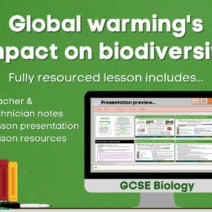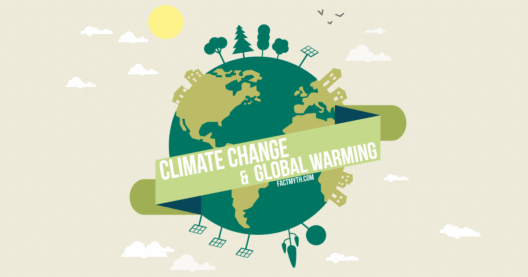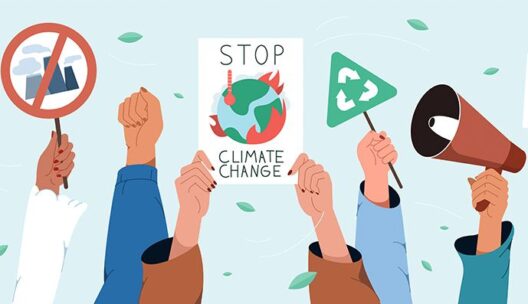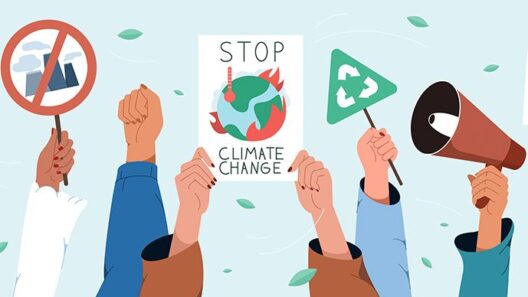The Earth, our shared home, is in a state of precarious balance. Climate change has emerged as one of the most pressing crises of our time, catalyzing an urgent need for substantial interventions. Fortunately, myriad solutions exist that harness technology, innovation, and collective action to address this global challenge. The following exploration illuminates some pivotal strategies that can mitigate climate change while also enriching our environments and societies.
**Empowering Renewable Energy Sources**
Transitioning away from fossil fuels is paramount. Renewable energy sources, such as solar, wind, and geothermal, offer a sustainable alternative. Sunlight and wind are abundant resources that, when tapped, can provide an inexhaustible supply of energy. The aesthetic appeal of solar panels as they gleam in the sun or the graceful sweep of wind turbines against a blue sky speaks not only to functionality but also to the beauty of sustainable technologies.
The cost of renewable technologies has plummeted over the past decade, making them more accessible than ever. In many regions, generating electricity from renewable sources is now cheaper than from traditional fossil fuels. Furthermore, communities around the globe are embracing decentralized energy solutions like microgrids, which allow localities to produce and manage their own energy. This local empowerment reduces reliance on centralized power systems and enhances resilience against climate variations.
**Energizing Energy Efficiency**
Reduce, reuse, recycle—this adage extends beyond just waste management; it embodies a philosophy of energy efficiency. Retrofitting buildings with energy-efficient appliances and insulation can substantially reduce greenhouse gas emissions. By optimizing energy use, households can not only lower their utility bills but also diminish their carbon footprints.
Incorporating smart technologies, such as smart thermostats and LED lighting, can facilitate unprecedented energy savings. Buildings equipped with these advancements not only conserve energy but can also enhance comfort levels for inhabitants. As urban landscapes evolve, the aesthetic integration of green spaces and energy-efficient architecture creates environments that are both beautiful and sustainable.
**Revolutionizing Transportation**
The transportation sector is a major contributor to greenhouse gas emissions. Solutions within this sector include electrifying transport systems and promoting public transit, cycling, and walking. Electric vehicles (EVs) are becoming not just a niche alternative but a mainstream option, thanks to advancements in battery technology and expanding charging infrastructure. The silent glide of an EV through the streets signifies a shift towards cleaner, more efficient transportation.
Additionally, the strategic design of city landscapes to incorporate pedestrian pathways and bicycle lanes can fundamentally alter how people move. Urban areas that prioritize non-motorized transportation promote community engagement while concurrently lowering emissions. The transformation of city streetscapes into vibrant, walkable neighborhoods stands as an aesthetic accomplishment and an ecological necessity.
**Sustainable Agriculture and Food Systems**
Food production is intricately tied to climate change, contributing significantly to greenhouse gas emissions. Sustainable agricultural practices offer a spectrum of solutions. Techniques such as regenerative agriculture, which focuses on soil health, crop diversity, and minimizing chemical inputs, can bolster resilience against climate perturbations while enhancing food security.
Farmers can also harness the power of agroforestry, integrating trees into agricultural landscapes. This approach not only sequesters carbon but enhances biodiversity and can improve crop yields. The sight of lush, diverse farming systems not only captivates the eye but also illustrates a harmonious balance between human activity and nature.
Furthermore, reducing food waste is a crucial component of a sustainable food system. When food rots in landfills, it emits methane, a potent greenhouse gas. By adopting practices to minimize food waste—from farm to table—society can make substantial strides in lowering overall emissions. The aesthetic appeal of colorful, fresh produce presented in local markets symbolizes not only nourishment but also a sustainable future.
**Advocating for Policy Change**
Systemic solutions to climate change require robust policy frameworks. Advocacy for policies aligned with climate action—such as carbon pricing, renewable energy subsidies, and stringent regulations on emissions—can catalyze transformations across multiple sectors. Engaging citizens in advocacy efforts empowers communities to voice their aspirations for a sustainable future.
Public engagement in climate policy also nurtures social cohesiveness. Articulating the climate narrative through storytelling, campaigns, and visual media can galvanize support for ambitious climate goals. When communities unite around shared objectives, they create a collective identity that is both aesthetically and ethically powerful.
**Fostering Innovation and Technology**
Innovation is the cornerstone of many climate solutions. Research and development in carbon capture technologies, energy storage systems, and alternative materials are crucial to revolutionizing our approach to climate change. Emerging technologies like blockchain are also finding applications in energy distribution and supply chain transparency.
The gleaming promise of technological advancement invites intrigue while addressing climate challenges head-on. By creating platforms for collaboration among scientists, entrepreneurs, and policymakers, society can foster a culture of innovation aimed at solving complex environmental issues.
**Conclusion: A Collective Path Forward**
Addressing climate change is an intricate tapestry woven from various threads of innovation and societal change. From empowering renewable energy and enhancing energy efficiency to reforming transportation and agriculture, every solution contributes to the larger objective. The aesthetic appeal of these endeavors enhances their intrinsic value; a sustainable future is not merely utilitarian but also one of beauty and harmony.
As we navigate this complex landscape, a unified approach that includes policy advocacy, technological advancement, and community engagement can lead to effective, multifaceted solutions to combat climate change. Embracing this challenge is an opportunity to create a resilient world, where both humanity and nature can thrive in equilibrium.







